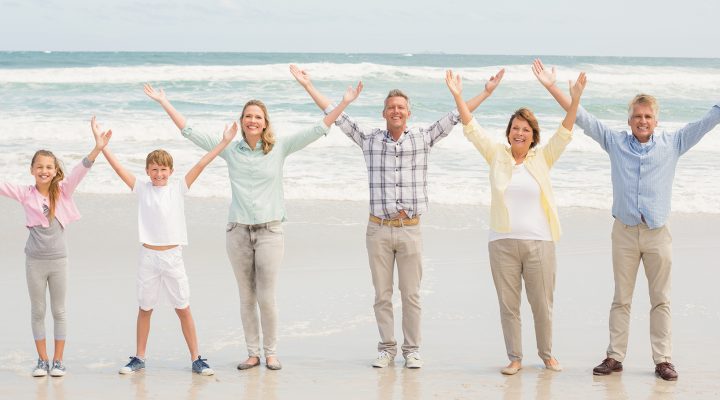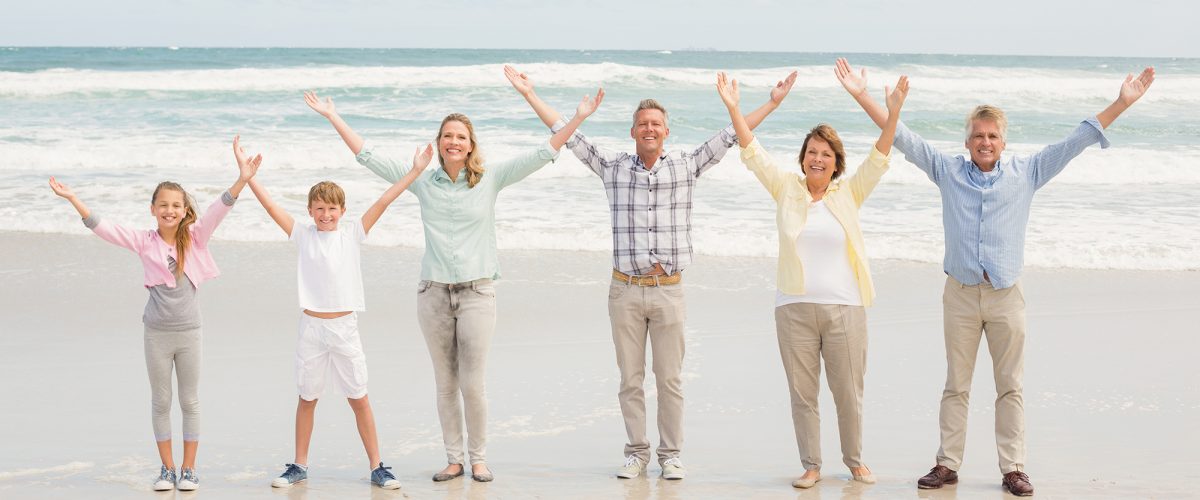Growing up in a doubly landlocked state, we were lake people. When my sixth grade Girl Scout troop went to Savannah and Tybee Island, many of the girls never had seen the ocean before. Instead of beach trips, people would go to the lake several times throughout the summer with family or a group of friends.
Fun was had and memories made, but it was not held in the same awe and wonder as the summer “beach week” in the South. When I came south for college, I started to hear about the summer ritual from my classmates. One thing I quickly learned was that it seemed like everyone had a preferred beach. Like a sea turtle returning to the place of its birth year after year, so Southerners made a pilgrimage back to “their” beach every summer.

Sarah Blackwell
“Where do you go to the beach?” is a classic conversation starter as Southern as biscuits and sweet tea. You can tell a lot about a person and their family by their choice of vacation destination.
The native North Carolinians are staunch supporters of the quaint North Carolina beaches, favoring the likes of Holden and Oak Island to avoid the influx of Virginians and Northerners in the Outer Banks and the mayhem at the heart of Myrtle Beach.
Those who like a little more entertainment with their beach might head to the areas around Charleston, Wilmington or the Gulf Coast.
The quiet beach types go to remote barrier islands that are mainly houses.
Some travel with their immediate family, but more common is a family compound with grandparents, siblings, aunts, uncles and cousins busting at the seams. Of course, some people take two of these summer journeys — one with each side of their family. The evidence of the family time together is usually displayed proudly in khaki and white in a photo on the mantle and a yearly post on social media.
“There is something deeper in this annual beach pilgrimage that goes beyond convenience and tradition.”
There is something deeper in this annual beach pilgrimage that goes beyond convenience and tradition, though. For many, this time by the shore is a sacrament or “a thing of mystery and sacred significance.”
There are several reasons why this ritual is a spiritual practice. The first, of course, is simply the power of the ocean.
John Philip Newell writes in Sacred Earth Sacred Soul: “The shoreline, that liminal space between land and sea, between the known and unknown, the soil of our habitation and the waters of life’s origins, was a portal that opened to the union of the temporal and the eternal, the seen and the unseen.”
It is hard to walk along the vast ocean and not feel a sense of awe and wonder at the size and scope of the planet and thus, the power of its Creator. There is something spiritual about literally being grounded in the earth with our toes in the sand and the waters rushing up against our ankles. We take time to notice the pelicans’ flight formation, the tracks of a turtle or the crest of dolphin fin as it rises and falls along the coastline. We feel recentered, connected and at peace with the rhythms of the tides and the Creator.
Spiritual renewal, though, also comes through the people we bring with us. Often several generations are piled into houses and beach tent clusters in a proximity that reminds us of previous generations when people lived with more than just their nuclear family. Cousins of different ages and stages find connection points in their love for The Mandalorian or the fun of boogie boarding.
The intergenerational nature lends itself to stories of remembrance — a key spiritual practice we see throughout the Bible. Inevitably the day ends with way more people piled around the dinner table than it was designed to hold, exchanging stories of the day but also keeping alive the “legacy” stories that shape our families. At some point, the story of Uncle Charlie’s bucket of live crabs getting loose in the condo will come up to the amusement of all. We will laugh, smile and then remember a man we lost too soon.
“These sacred times of remembrance bind us closer as families as we pass along our core values.”
These sacred times of remembrance bind us closer as families as we pass along our core values. This helps the next generation understand the importance of tradition, which can be transitioned later into our church community contexts.
Looking to the past to pave the way for the future is an important skill for our children to learn. Whether your tradition is matching tie-dye shirts, bike rides around the island, beach baseball, photos in coordinated outfits with rotating color schemes, bocce battles, boat cruises, early morning fishing excursions, or dinner out at a favorite restaurant, all these experiences are building in young people a sense of belonging to your family unit.
The same principles can apply to our churches as well. When we give time to establishing healthy traditions, gathering around tables together and sharing our stories, we become more closely connected to God and each other. Sometimes these moments together represent occasions of reconciliation and healing. Like Jesus after his resurrection on the shore with Peter, we join with one another in meals and conversation that bring about forgiveness, greater understanding and renewed connection.
The other major spiritual practices we permit ourselves when we visit the beach are play and rest. We build sandcastles with our kids, play in the waves and try to win at ladder ball. We play cards at night or have intense battles in favorite family board games.
Besides allowing ourselves the joyful glee of childhood pursuits, we also give ourselves permission to rest. The sand, wind, sun and surf converge to give us some of the most restful slumbers of the year, and napping is understood as a major component of the day. Sometimes we pick up a book for the only time that year. In a world that is in perpetual motion, this rest is a helpful reset as we face another hectic fall season.
I have joked that if I ever lead premarital counseling between Southerners, the first question I am going to ask is, “How do you beach?” Wrapped up in the question is expectations regarding family time, vacation as rest or excitement, spending habits and locations.
Are you marrying the person who is already coming back in from a beach morning as you arrive at lunch time? Do you plan to stay up late or awaken so you can see the sunrise? Are you a “busy beach” person or a “lazy day” one? There is so much weight and significance in the way this practice renews us that is important to know the expectations going into it.
Next time you make the journey up the boardwalk, across the hot dry sand (which may seem as long as the Israelites wandered in the wilderness), wrestle with a beach tent (which probably approximates setting up the ancient tent of meeting) and finally have your first sit looking over the sand and surf, pause and be mindful of the blessing of the sacrament of the shore, the journey that brought you there and your fellow travelers on the journey. Embrace the time not only as a vacation, but as a time of spiritual renewal.
Sarah Blackwell is a contributing writer at Word & Way, an adjunct instructor in the Religion and Philosophy Department at Wingate University, and a D.Min. student at McAfee School of Theology. Her intergenerational faith formation book, God is Here is available through Amazon and other online book retailers. Follow her writings at www.proximitytolove.org.


